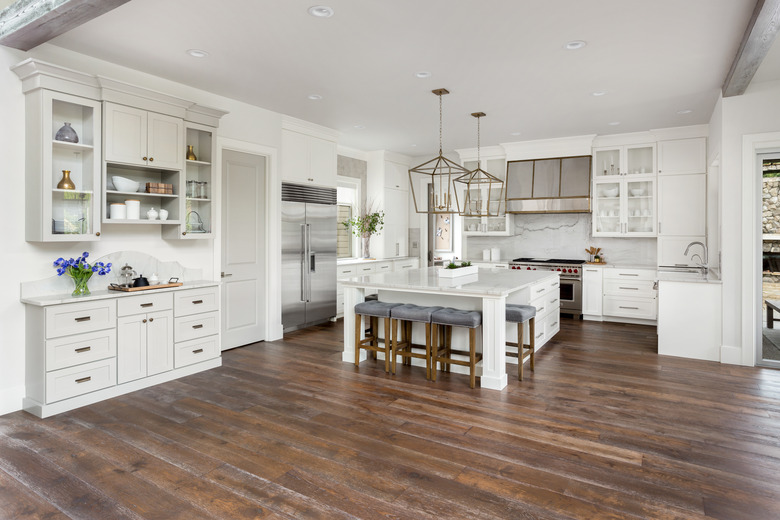The Pros & Cons Of Beech Hardwood Flooring
Oak, walnut, hickory and maple may come to mind when you think of hardwood flooring, but beechwood floor material offers a distinct look and some important benefits to make it a contender for your next remodeling project. Domestic beech trees grow an average of 120 feet tall and produce strong hardwood with light, airy coloring and uniform grain. Before choosing beech flooring, compare the pros and cons to decide if it fits the look and durability you want.
Unique Beechwood Floor Look
Unique Beechwood Floor Look
Beechwood floorboards bring in a warm, inviting, light look that gives it a distinct design. The uniform grain is closed and tight, creating a consistent look across the floor. Beechwood floors have less texture than some other woods, giving them a smooth appearance.
The color depends on the source of the wood from within the beech tree. Heartwood displays a warm brown hue with red undertones. Beech sapwood has a lighter look that's often pale white. You'll notice moderate to high variations in the coloring from board to board, which adds character to the flooring.
Strong, Durable Material
Strong, Durable Material
Beechwood ranks 1300 on the Janka hardness scale, which is a useful scale that puts a numerical value to a wood's hardness to determine how useful it is for different applications. The rating means it comes in a little harder than the popular red oak often used in flooring, which ranks 1290. The 1300 Janka rating makes beech flooring durable enough for moderate to heavy foot traffic, but not too hard, so it's still suitable as a flooring material.
Floors made of beech are resistant to shock, which can help them hold up well over time. They resist scratching, which keeps your floors looking great without the need for frequent touchups or repairs. The flooring resists wear, and when it does wear, it does so evenly and retains its sheen to maintain a consistent look. It also maintains its coloring well with sunlight exposure, so you shouldn't notice faded areas on the flooring in sunny spots.
Versatile Placement Options
Versatile Placement Options
Because of its strength, beech flooring is an option for most rooms in your home. It can also work in commercial applications because it's good under heavy traffic. The one exception is moist areas, such as your bathroom, but most hardwood flooring isn't recommended in those spaces anyway.
Difficulty in Staining
Difficulty in Staining
Beechwood may be right for you if you like its natural coloring. If you're planning to stain the hardwood, it may not be the best option. Beech doesn't accept stain as well as some other wood species. This means you won't be able to change the look of the flooring easily in the future with stain.
Lighter dye stains usually work best on beechwood, while darker stains don't. Conventional pigment stains can't soak into the beechwood because of its small pores. The hardness of the wood also makes it difficult to sand, which can be challenging if you want to refinish and stain your floors.
Potential for Shrinking and Splitting
Potential for Shrinking and Splitting
Traditionally, beechwood isn't easy to work with, especially with hand tools. Shrinking and warping can occur if the wood isn't properly dried before being used as flooring. Kiln drying tends to produce a stronger flooring material that's less susceptible to shrinking than air-dried beech. Choosing a quality kiln-dried flooring product helps eliminate those issues over time, so explore flooring options carefully before choosing beech.
Another potential problem is splitting of the wood. While beechwood floor material has good nailing properties to hold nails in place, it can also split while you're nailing the boards. Pound nails in carefully to keep the boards intact.
